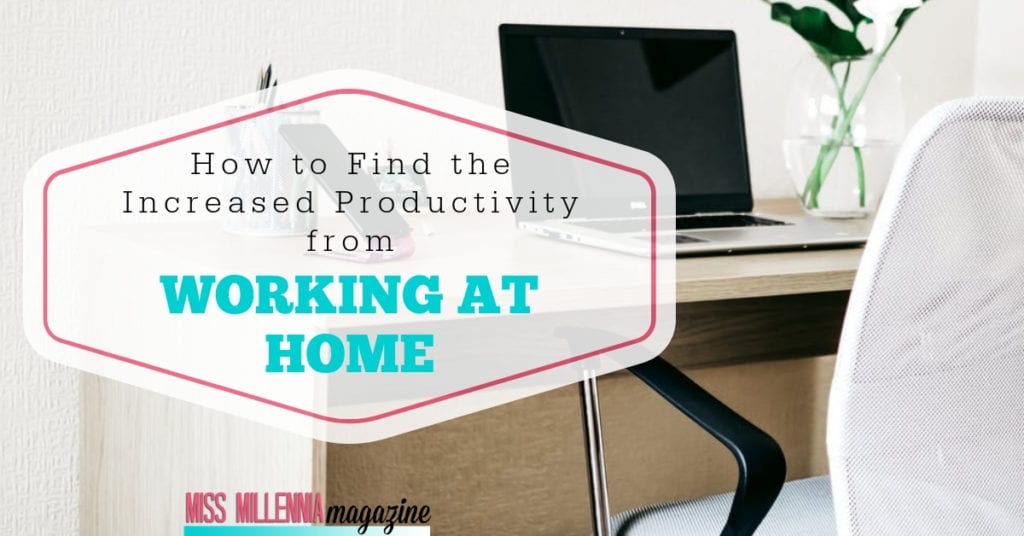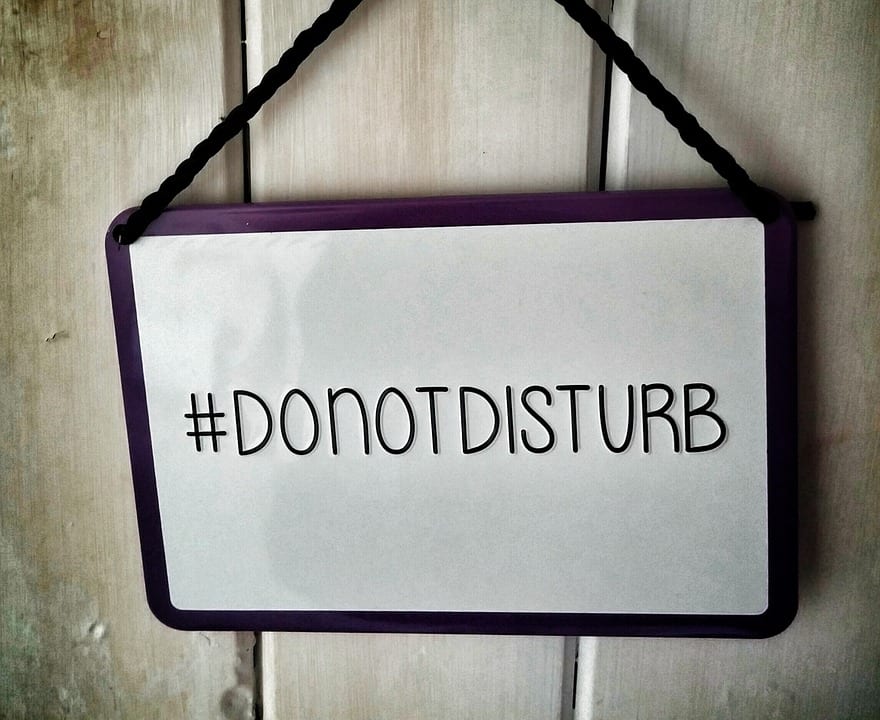How to Find the Increased Productivity from Working at Home
The idea that we need a traditional office environment, a cadre of co-workers, and the fear of an all-seeing, omnipresent authority figure to be productive is, largely, a false one. It has been proven over time that the majority of people who work from home tend to be more productive than when they work in the common work environment.
However, finding that productivity can be a challenge, especially when you first start. Whether you’re running a business or you’re starting a remote working career, here’s how you find the increased productivity that working from home can offer.
Make the space right
Your work environment does matter, even if you don’t necessarily need a traditional office environment. When setting up a home office, it’s a good idea to look at giving yourself a space that’s “separate” from the rest of the home. It might be a room to itself, a particular corner of a room, or even one desk. So long as it’s for work and work alone, it lets you get out of the idea that you’re in the home and removes some of the temptation to relax and procrastinate. Make sure the furniture you choose is well suited for your work as well. An ergonomic desk and chair set-up, offering plenty of support for the back, can help you stay comfortable at work.
Get into the zone
When you first start, you might find that making the switch from home-mode to work-mode can be a little harder when you don’t have a commute to help you make it. If you sit down to work without any prep, you can start with a very sluggish pace, indeed. Instead, make sure you have a morning routine, allowing yourself the time to have breakfast and to get dressed for work so that, when you sit down, you’re a little readier to settle into work. Music can be a great help, too, so put together a playlist that helps you get in the zone and focus on your work.
Decide what you’re going to do
While you’re still “booting up” for the day, it’s a good idea to take the first ten-to-fifteen minutes planning the day ahead. Especially if you’re running a new business, you’re likely to have more tasks to complete than you’re readily able to do in one day alone. For that reason, when you’re putting together a to-do list, you also need to create a to-not-do list. Rank the different tasks you have ahead of you regarding importance and urgency. Tasks that rank higher should be done today, while tasks that fall a little lower on the priority listings should be saved for the next workday until their importance or urgency overtakes the other tasks.
Decide when you’re going to do it
When you know what you’re going to do, it’s a good idea to put it all on a schedule. Workflow management tools are great at helping you put together a schedule, letting you create blocks of time that are dedicated to a specific task. Where possible, avoid working on any one task for longer than the block of time you have assigned to it. If you have to finish it tomorrow, instead, that’s fine.
It makes sure you don’t get stuck on processes that are taking way too long and getting in the way of your overall productivity when deciding when to do what tasks, batching them helps, too. This means putting similar tasks together. For instance, if you have two tasks that require the use of spreadsheet software, doing one after another means you don’t spend as much time switching lanes, mentally. Moving from one kind of work to another requires some time to acclimate, and batching eliminates some of the transitionary time.
Streamline your communications
If you’re in remote working, then you likely have to touch base with your employer. Similarly, when running a home business, you may have clients, partners, and service providers to stay in touch with. Making sure that phone calls and emails aren’t getting in the middle of the workday is important. A virtual phone number can help you set up a work phone system that takes messages and provides some human response, so your callers aren’t going straight to voicemail. It can even translate messages to text so that you can respond to them with the rest of your emails. As for emails, it’s wise to give yourself 30 minutes to an hour per day of organized email time instead of checking it regularly throughout the day. Urgent emails might still require you to take a break, but you want to avoid that as much as possible.
Find and eliminate your distractions
One of the biggest distractions at home can be those you live with, so we will address that separately. Otherwise, however, time-tracking tools make it a lot easier to see where you’re wasting time. If you’re spending too much time on social media websites or checking up on the news or your favorite past times, you can identify sites that you can block your access to during the work hours so that you’re dealing with a lot less self-imposed downtime.
Make sure others respect the office
As for those family members, or housemates, or whomever you happen to live with, it’s important you have “the talk” with them. You may feel bad about insisting that part of the home shouldn’t be treated as part of the home, but if they’re inclined to interrupt your work on a regular basis, it can cost you regarding productivity and cause a lot of stress. It’s wise to set boundaries early and to make sure that they understand that what you’re doing very much counts as work. You wouldn’t go to their office or workspace and interrupt them at their job, after all.
Breaks are an important part of work, too
It’s tempting to want to maximize the use of your time at home by doing as much as you can in a single burst. If you get work done sooner, you get to enjoy the perks of the short commute all the sooner, too. However, breaks are essential. The stress and demands of the day weigh heavier on your head the longer you work without a break, which essentially acts as a reboot. Make sure you’re taking breaks correctly, too. Fifteen minutes spent at the desk is nowhere near as good for helping you remain active and energetic as thirty minutes outside the home.
Work outside the home
One of the most significant benefits of working from home is that you have a lot more flexibility to work how you want. So, when you’re sick of staring at the four walls around you, give yourself something new to look at. Take your work to a café or a coffee shop near you or look for co-working spaces that can recreate the feel of a traditional workspace if you feel like you need a change of pace or if things are too distracting in the home right now. It doesn’t have to be a regular thing, but it can help you kick things into high gear when you need that extra burst of productivity.
Make yourself accountable
When you need to get your nose to the grindstone, and you’re in crunch time, dealing with a looming deadline or a huge project that demands your full attention, then having other people to keep you on the straight and narrow really can help. There’s a growing trend of online work-buddy tools that essentially pair you up with another person working in much the same situation. They can help keep you accountable so that you have someone to set you straight when you’re starting to stray from work. It might not be something you need to make use of on a regular basis, but when distraction isn’t permissible, it can be helpful to have a friendly, chiding presence on the other end of your connection.
Be ready for equipment snafus
In today’s digitally driven work culture, the equipment we use is often the root cause of downtime. Your PC might suddenly decide it doesn’t want to work, or your internet connection might give out. It’s important to anticipate these realities and have a back-up ready. Having a mobile Wi-Fi hotspot can allow you to pay a little extra to access a different internet connection at any time. It’s wise to have another laptop, tablet, or device you can use to work when your usual workstation isn’t being cooperative as well. If all else fails, you might still be able to get some work done on the computers at your local library.
If you’re like most people, you will eventually find that you’re naturally much more productive when you have more control and flexibility regarding your work life. The tips above can help you build the habits that lead to that increased productivity, helping you get the most out of your time.












